Some recent online conversations started me thinking about the women speculative authors of yore. Not the recent yore, when I was a teen or at least a kid, but days even more of yore than that: the 1950s and earlier1.
Wondering what I mean? Here are five works of speculative fiction from an era so long ago that even I did not exist. No doubt a few of the following works are known to you. The few that are not might be worth reading.
The Diploids and Other Flights of Fancy by Katherine MacLean (1962)
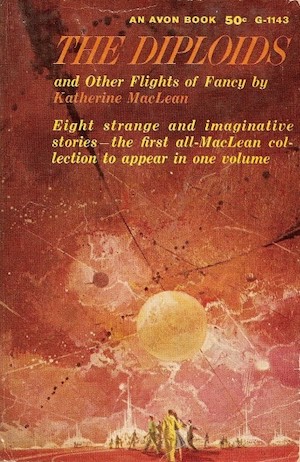
While the collection itself is of 1960s vintage, the contents of this splendid MacLean collection almost all date from the early 1950s, the lone exception being from 1949. MacLean was a skillful author who could shape her stories to fit diverse markets. However, most of the stories in Diploids were published in two of the three flagship magazines of the period, Astounding (now Analog) and Galaxy. Galaxy was more open to SF that was more humanistic, less tech-focused, while Astounding paid better.
My favorites in this volume are “The Snowball Effect,” which features a social experiment successful far beyond its creators’ contingency plans2, and “Pictures Don’t Lie,” in which seeing really should have been believing. Also of note, “Incommunicado,” a tale of human-machine rapport that was wildly praised in its era.
I am a bit disappointed that MacLean, a Cordwainer Smith Award recipient, was never further honored as a SFWA Grandmaster. SFWA did name her Special Author Emeritus in 2003. Who knows? Perhaps they will consider MacLean for the Infinity Award.
Children of the Atom by Wilmar H. Shiras (1953)
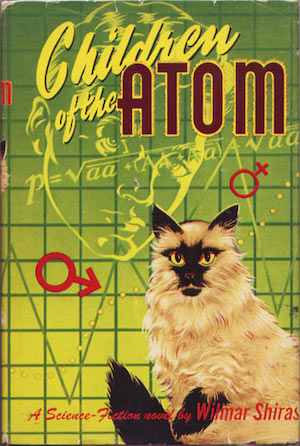
A 1973 nuclear power plant mishap killed many unlucky staff members. Some survived, despite radiation exposure, and went on to have children… mutant children.
On meeting one mutant youth, child psychologist Peter Welles is quick to deduce that there must be others. America can be an unwelcoming place to unusual people. Rather than leave the mutant children to the vagaries of mob justice, Welles establishes what one might call a school for gifted youngsters. However, Welles’ attempts to ensure peaceful relations between man and mutant will not play out as he envisioned.
Modern readers may recognize in Children of the Atom a possible inspiration for Marvel Comics’ X-Men. The differences outweigh the similarities. Shiras’ mutants are geniuses, but lack flashy physics-defying superpowers. More importantly, Shiras takes her plot in an entirely different direction from the conflict-heavy comics. The result is closer to Zenna Henderson than Stan Lee or Jack Kirby.
The Starmen by Leigh Brackett (1952)
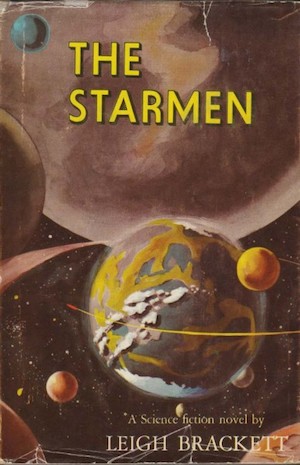
Michael Trehearne feels himself perpetually out of step with the rest of the world. He travels to Brittany in search of family roots and an answer to his malaise. To his surprise, he discovers that his origins may be far more exotic than he ever could have imagined. Michael may be a hybrid human, the illicit offspring of a Varddan, one of the starmen of Llyrdis3. He certainly demonstrates Varddan immunity to the effects of superluminal travel. Whatever Michael’s true origins, he provokes a crisis amongst the starmen. The easiest way to deal with disruptive elements is, of course, to kill them… but Michael is hard to kill.
Michael is an issue because he potentially threatens the Varddan Council’s monopoly on star flight. The Council claims that they must protect their monopoly because every other flavor of human is so xenophobic that breaking the monopoly would lead to interstellar war. It’s mere coincidence that their efforts have an unintended side effect: empowering and enriching the Council.
Judgment Night by C.L. Moore (1943)
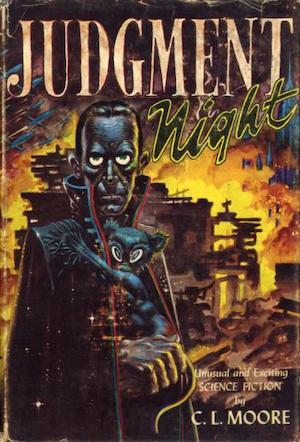
Armed with the wisdom of the Ancients of Ericon, dynasty after dynasty dominated the galaxy, then fell to their own folly. Imperial heir Juille is determined to preserve her family’s empire. Egide of the H’vani believes it is his people’s time to rule. Juille believes prophecy ensures her certain victory… but then, so did every previous dynasty.
Readers might expect that Juille will fall for Egide as soon as she sees his impressive jawline. Moore didn’t write that sort of heroine. Juille never loses track of her goal. She is not nearly as good at listening to the oracles’ unambiguous warnings, but then, what would happen to the plot if she took time to consider those?
“Unwillingly to School” by Pauline Ashwell (1958)
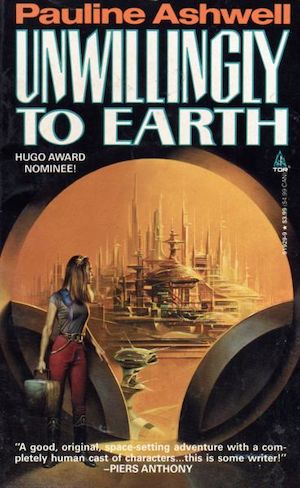
Frontier girl Lizzie Lee wields lies and half-truths to achieve her ends. Her talents are sufficient to wrap the rough-and-ready pioneers of Excenus 23 around her finger. Will Lizzie Lee succeed in fast-talking her way off her birth world and into a Terran university program for cultural engineering?
Lizzie is nearly as good as she thinks she is. There were moments where Lizzie reminded me of Mattie Ross’ horse-trading in Portis’ True Grit. As it happens, social manipulation is a regulated trade in this universe; Lizzie explains, in her eccentric dialect, just why that is.
Of course, women have written science fiction and fantasy since the field began. This is only a small sample; I’ve had to overlook many interesting works. Feel free to mention your pre-1961 favorites in comments below.
- This unfortunately excludes Ursula Le Guin, whose prose SF did not appear until just after I was born. I will also neglect pre-Gernsbackian authors like Margaret Cavendish and Mary Shelley because while works like The Blazing World and Frankenstein would be classified as SF if published now, they predate SF in its modern sense. I will also regretfully omit Judith Merril’s Year’s Best S-F anthologies, because as delightful as they are, most of the works she chose were works by men. ↩︎
- Because they didn’t bother with contingency plans. Or, for that matter, research ethics. ↩︎
- It’s best not to wonder how all the worlds of the galaxy got their own humans in a story that seems to be set in the 1950s. Exceptionally parallel evolution, I suppose. Also, it’s odd that nobody of significance on Earth seems to have noticed off-world traders. ↩︎










